Architecture
 Restorations
Restorations
The Presidential Office Building has undergone repair and renovation on a number of occasions, both during the Japanese period and since the arrival in Taiwan of the National Government of the Republic of China. These renovations have been undertaken largely to adjust to changing needs for the building, repair war damage, and perform regular maintenance.
During the Japanese era, most projects involved regular upkeep and the replacement of equipment and other physical infrastructure. After the arrival of the National Government following World War II, the building underwent major renovations to repair damage caused by bombing, and remodeling has been done from time to time since then to provide for changing needs.
Japanese colonial period
Post-fire repair work
In 1935, a fire broke out on the fifth floor of the Governor-General's Office (now the Presidential Office Building). The fire started in a storeroom housing film materials and damaged the entire southern corridor. The wood and slate roof required repair, and in the course of the reconstruction that year the gabled roof was replaced with a flat roof made of reinforced concrete and steel beams.
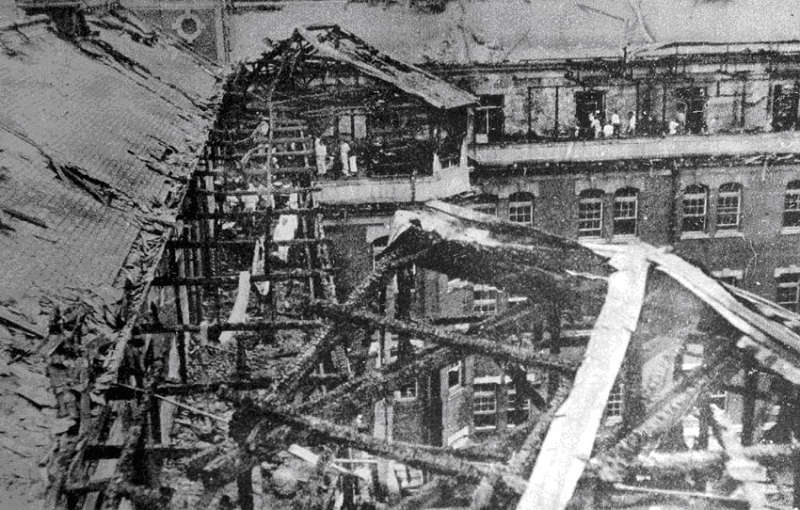
A view of the Office of the Governor-General after a fire broke out in 1935 (reprinted from Compilation of Documents of the Office of the Governor-General of Taiwan‧臺灣總督府公文類纂)
Routine maintenance and repair work
The Governor-General's Office underwent repairs nearly every year during the Showa Era (which in Taiwan lasted from 1926-1945). Most of the work involved additions or improvements to existing facilities. Drapes and blinds have frequently been installed throughout the offices over the years to shade the interior from the sun. Meanwhile, the fifth-floor corridors originally were unenclosed terraces, but due to a lack of office space in the building, fifth-floor space that originally served as storerooms was renovated into offices during the Taisho Era (1912-1926), and roofing was added over the fifth-floor terraces.
After the arrival of the ROC National Government
- 1946 – Celebrations held to mark the 60th birthday of late President Chiang Kai-shek. Damage suffered by the building during American bombing in the final years of Japanese colonial rule is repaired.
- 1951 – Elevator to the top of the tower breaks down, is replaced by a wooden staircase.
- 1957 – Presidential Office Building undergoes structural inspection and repairs.
- 1963 – Outer walls of the building are repaired, doors and windows repainted, and marble floors installed.
- 1969 – Corrugated steel roof replaced with tinplate and covered in three coats of water-resistant coating.
- 1972 – Structural safety inspection carried out.
- 1979 – Renovation of the Entrance Hall and the Main West Side Entrance.
- 1982 – Tinplate roofing replaced.
- 2001 – Many offices in the Presidential Office Building are renovated.
The Ministry of National Defense, which had maintained offices in the Presidential Office Building for a time, moved out in 1999. The departure freed up office space, presenting an opportunity for a comprehensive renovation and redesign to meet the need for an integrated, safe, and modern structure. In areas of the building where the outer corridors had been converted to temporary office space, the offices were scaled back and the corridors returned to their original function. This made the working environment more comfortable and aesthetically pleasing, indirectly boosted staff efficiency, and restored the building to its original appearance.
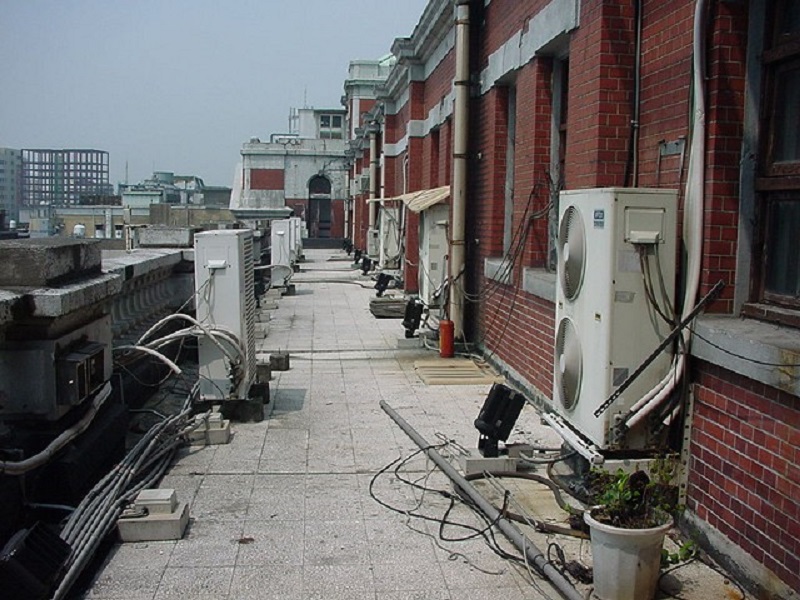
Veranda on the fifth floor before restoration (courtesy of the office of Shiue Chyn)

Veranda on the fifth floor after restoration (courtesy of the office of Shiue Chyn)
- 2003 – Repair of the Presidential Office Building's exterior walls
Following its construction, the building, then the Office of the Governor-General of Taiwan, weathered a serious fire in 1935 and an air raid conducted by the US during World War II. Repairs both large and small were carried out continuously in the years since the arrival of the National Government. However, there had never been a complete inspection, cleaning, or repair of the entire façade. Previous renovations had been carried out on a piecemeal basis, which left the façade with a motley appearance. The facing of stone and polished aggregate, for example, had come to present a very uneven appearance due to improper repairs as well as ordinary wear and tear over the years. In 2003, a budget appropriation was made to carry out a comprehensive repair of the structure's exterior walls. The building has now been restored to its original appearance.
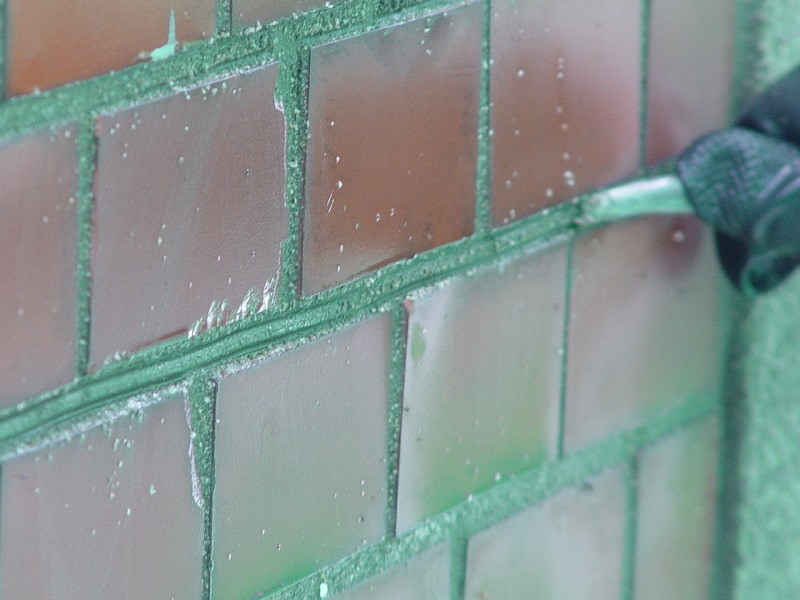
Tuck pointing the brick façade (courtesy of the office of Shiue Chyn)
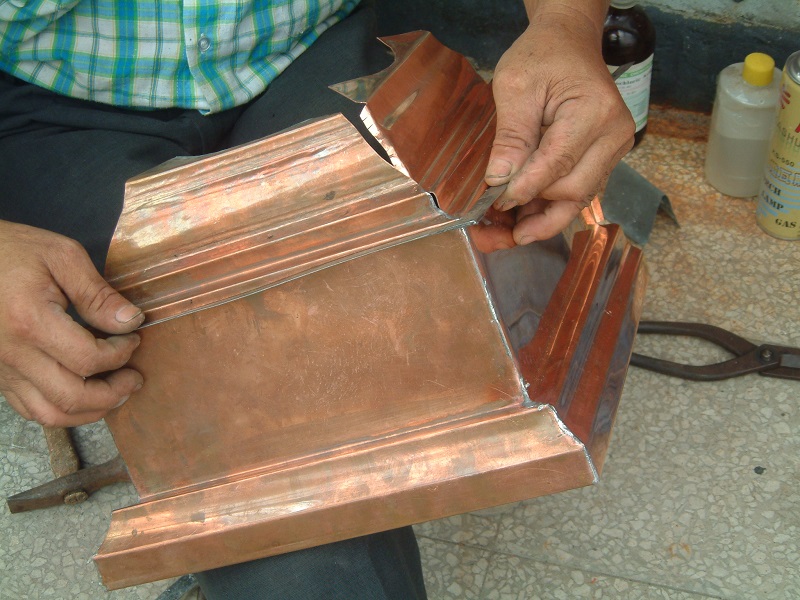
New hand-made copper guttering (courtesy of the office of Shiue Chyn)
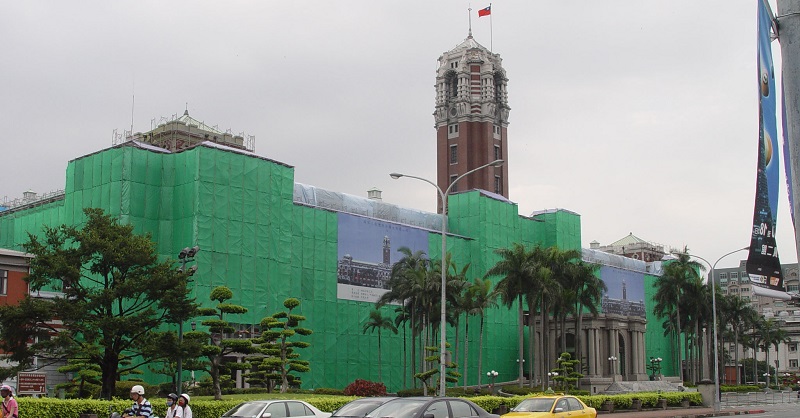
Exterior of the east side of the building during restoration (courtesy of the office of Shiue Chyn)
- 2005 – Renovation of auxiliary buildings at the south side of the Presidential Office Building.


